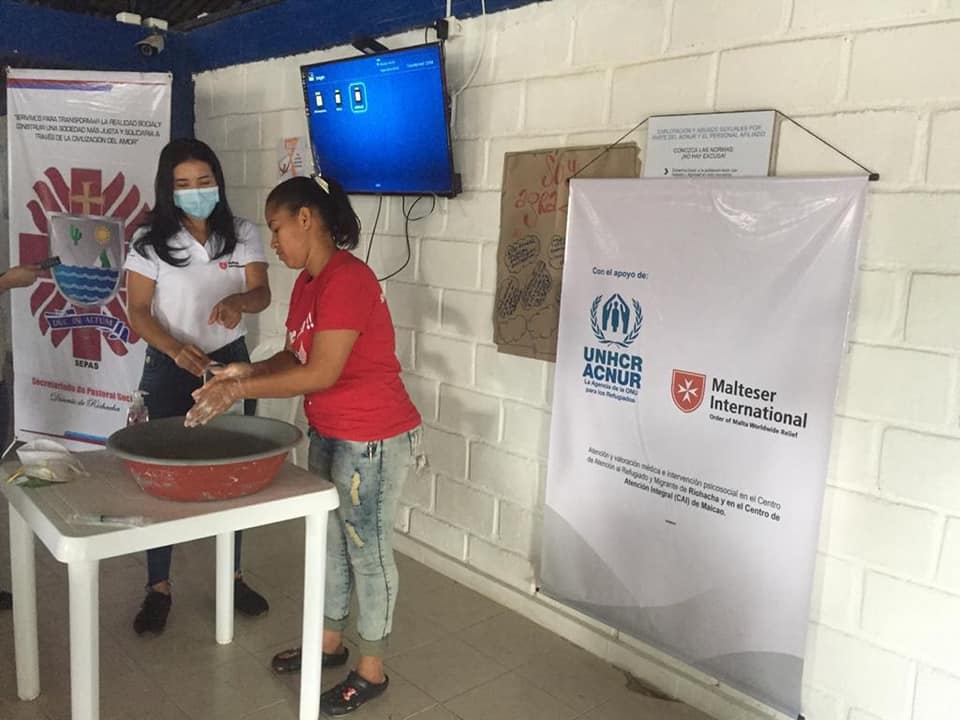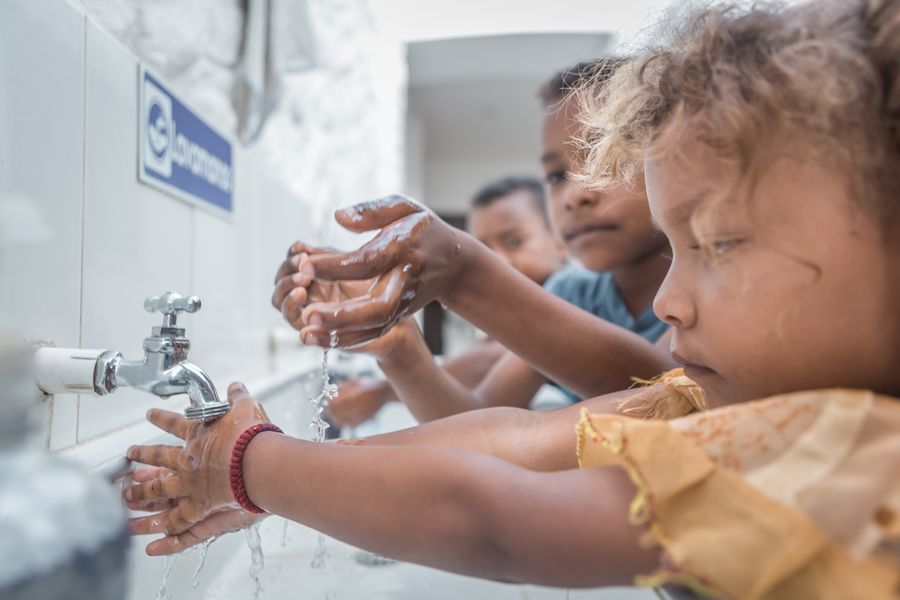International
Inside the Refugee Camps During the Pandemic
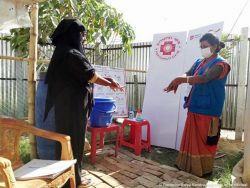
Last month, as COVID-19 took ahold of our health systems and global economy, putting most of our lives on pause – we asked our program staff across the Malteser International network how the virus was impacting refugee camps around the world. Their responses reveal that every context is distinct and each society faces its own challenges. As an international humanitarian aid organization we monitor and adapt our work to the changing circumstances.
Our colleagues and partners shared their thoughts from places as diverse as Bangladesh (Rajan Ghimire), Syria (Ragdha al-Shubayli), Thailand (Peter Vogel), Uganda (Alexander Gnaedinger), and the Democratic Republic of Congo (Johannes Schildknecht). Note: IDP refers to internally displaced people.
- What is the current situation in the camps regarding Covid-19?
Bangladesh: The refugee camps for the Rohingyas in Bangladesh are among the largest in the world and have a very high population density. Hygiene conditions are poor and health facilities are insufficient. In the case of a COVID 19 outbreak, it would practically be impossible for the refugees to self-isolate due to a lack of space. Neither is it possible to apply social- distancing correctly for that reason. Consequently, the transmission rate will be very high in case of an outbreak.
Syria: The conditions are reportedly very similar in IDP camps in NW Syria, where our local partner agency describes the situation as “horrible, overpopulated and in chaos with a lack of health awareness”.
Thailand: In refugee settings in a more stable environment like for the Karen refugees in Thailand, MI works jointly with the Government and refugee community on transmission prevention measures. Prevention is crucial as the number of COVID 19 cases in local communities is on the rise. We are faced with the same risks of transmission of COVID 19 infections from local communities in Uganda to the refugees in the settlements there due to the regular contacts and proximity between these communities.
- What’s the mood like in the camps? Is there a risk of a panic?
Bangladesh: In the densely populated camps in Bangladesh, refugees feel uncertain and insecure and can react with stress and frustration when they perceive being exposed to a COVID 19 related risk, like the identification of local community people in nearby Cox’s Bazar town who tested positive for the virus, or the presence of refugees with fever and flu symptoms.
Syria: In the camps in northwest Syria, the mood among people varies from fear and anticipation by some, to indifference by others. Given the fact that the IDPs in NW Syria have lived in a prolonged crisis situation for years now, the risk is there that certain sections of the community will not give the due attention to the risks of a COVID 19 outbreak that it deserves.
DRC: In the refugee camps in DRC, people are also very concerned about the new virus, especially since it is so easily transmissible. This risk adds to a multitude of other hardships that people living in the camps face on a daily basis. The refugees are aware that many people in the camps are likely to have weakened immune systems due to the difficult environment they live in. Therefore they expect serious implications of the epidemic.
- What are the biggest issues and threats concerning a virus spread in a refugee camp?
Bangladesh: In the Rohingya camps, refugees are being told to keep two meters apart. That is the width of most paths in Rohingya camps, which are clogged each day with people out on the daily search for food and fuel. Each shelter is barely 10 square meters and they are overcrowded with up to 12 people. Social distancing is virtually impossible in these camps. Furthermore, refugees and IDPs people are in many settings not yet fully aware of the need and importance of social distancing. In the Rohingya camps there is also a certain degree of fatalism among the refugees.
Syria: In NW Syria there is a need to restrict non-essential access to health facilities as these are used by people as “meeting places”, leading to overcrowding. There are many interactions between the refugees and IDPs and local communities, and diseases can easily be transmitted between these groups. Access to refugee camps is not yet controlled in all cases. Low level of awareness and insufficient information on preventive measures, like reported from the Rohingya camps in Bangladesh is also a concern in the context of a pandemic.
Uganda: It is also important to note that crucial measures necessary for preventing the spread of COVID-19 infections are often not available to the people living in settlements like is the case in Uganda. This mainly concerns handwashing. Less than 30% of households have a functional handwashing facility at their homes. Most of them don’t have access to enough soap to comply with the recommendations issued by the Government of Uganda. Health centers in the refugee settlements in Uganda and most other locations where we work are overstretched and disease surveillance structures are weak. It is very likely that cases of COVID-19 go undetected and continue spreading the virus for a considerable time before action can be taken.
DRC: The living conditions in the camps in DRC favor a rapid spread of the virus as well. People live together closely, with several people sharing their small 1-room houses. Furthermore, hygiene conditions are challenging due to the sheer number of people living closely together. In addition, the difficult living situation of refugees in the Congolese camps, both physically as well as mentally, weakens the refugees due to other illnesses (esp. diarrhea) as well as malnutrition and does not allow most of the people to practice social distancing by staying at home. People need work to survive.
- Do all refugees have access to soap, clean water, and medical supplies?
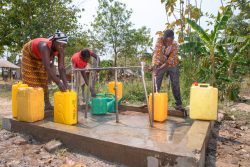
Bangladesh: Access to adequate healthcare is already limited in the Rohingya camps and a pandemic is likely to create an even larger gap in medical supplies, including masks, soap, and hand sanitizers. Water and soaps are being provided by the WASH Sector. But the water supply is inadequate. In the camps, dozens of people share a single hand-pump and a toilet.
Uganda: Most health centers in the refugee settlements in Uganda don’t have sufficient personal protective equipment (PPE) or even sufficient resources to ensure hand hygiene. There are no ventilators that could be used for the treatment of severe cases of COVID-19 in West Nile, Uganda, and this situation is likely to be the same in other refugee and IDP camp settings.
DRC: Generally, refugees in the DRC camps have access to soap, clean water, and medical supplies, but to a limited degree only. Providing enough clean water and storing it appropriately is challenging in this environment. Due to our project funded by the German Federal Foreign Office (Auswärtiges Amt), medical treatment for the refugees in the Meri refugee camp is free of charge. However, the provision of intensive medical care, which needed for severe Covid-19 cases, is very limited.
- Is it even possible to test everyone (on a regular basis) and to implement measures to prevent an outspread? And how do these measures look like?
Bangladesh: Testing is quite low in general scenarios in local communities. There was only one testing lab available at Dhaka but the government is extending to different regions, including to the Cox’s Bazar area where the refugee camps are located. For suspected cases there are already established Isolation Center from where, if needed, there is SOP of testing swab by WHO investigation and surveillance team from Cox’s Bazar Medical college lab. Until now there are no facilities for the treatment of confirmed cases in the camp area. Those confirmed cases will be treated in government-designated Covid-19 hospitals only.
Thailand: The MI team is working closely with both authorities, the refugee community, and other international NGO actors inside the camps to prevent the virus from being introduced to the camp population. That is why people are being screened and quarantined for 14 days, if necessary. The camp community is receiving information on how to prevent transmission and the importance of social distancing and in general the same guidelines that are shared with people globally.
Uganda: Like in many countries, the Government of Uganda has ordered the closure of most shops and banned all activities that involve gatherings of more than 5 people. In addition, all private traffic (with exceptions for some essential services, including to some extent humanitarian organizations like Malteser International) has been banned and a general country-wide curfew from 19.00-6.30 has been instated. These measures are tough on many people and their livelihoods, especially the poorest and most marginalized.
DRC: Testing is a challenge all over the world at the moment, and due to the fact that there are very limited testing capacities in the DRC (only one laboratory is capable of doing the tests), it is especially difficult in the country. It is not expected that general testing for everyone will be possible.
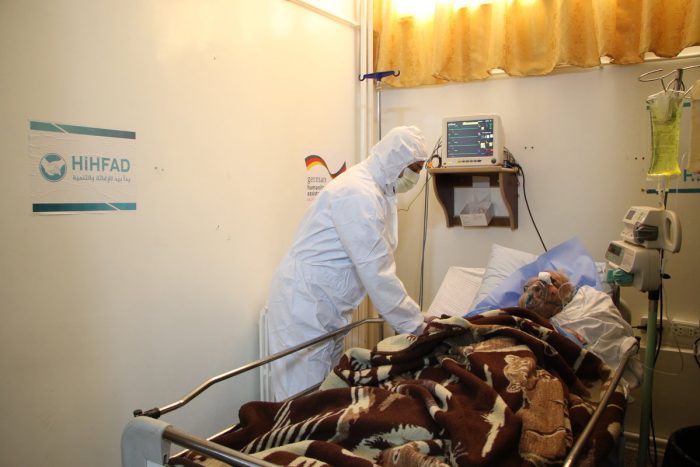
- How does information like safety guidelines get passed along in the camps?
Bangladesh: The Health Sector has trained humanitarian workers as trainers on basic Infection Prevention Control for COVID-19, triage, and isolation. Key guidance documents have been developed and shared with key humanitarian staff including guidance on the rational use of PPE, and guidance on the decontamination of medical and non-medical workplaces.
Aid agencies working for outreach activities in the camps are told to disseminate messages about the virus and preventative measures. Mosque imams and local leaders have also been engaged in messaging. Communications are ongoing through posters, leaflets and messages in Rohingya, Burmese, and Bengali languages, explaining how the virus spreads, how individuals can protect themselves and their families, its symptoms, and care-seeking points.
Thailand: The MI program uses a public announcement system to reach most people with the standard messages and guidelines. As COVID-19 still has not reached the camp, staff go out to each household to provide information and also leaflets on how to protect against the virus and how to protect one’s family and community. Before doing this, we train our staff on safety precautions as well as we want to reduce any risks of transmission posed to them by going house to house. They will wear face masks and clean their hand regularly between each visit.
Syria: Safety guidelines are a weakness in NW Syria. If it is applied, it will be through WhatsApp groups or mosques calls. Other approaches used in NW Syria are; social media platforms, distribution of brochures, providing oral advice to the patients, and running awareness teams to educate them about illness and preventive measures.
Uganda: The local government in Uganda and several organizations are active in the settlements to pass information to refugees and the host community by different means. This includes radio shows, awareness campaigns with megaphones and loudspeakers as well as information passed through community structures. Even the telecommunication sector has joined into the effort to spread information on COVID-19 through voice messages that are played during phone calls instead of a ringtone. Malteser International is sensitizing all water users that come to fetch water at Malteser International water points to the risks of COVID-19, provides a handwashing facility, and ensures that distance between those who wait to fetch water is maintained.

